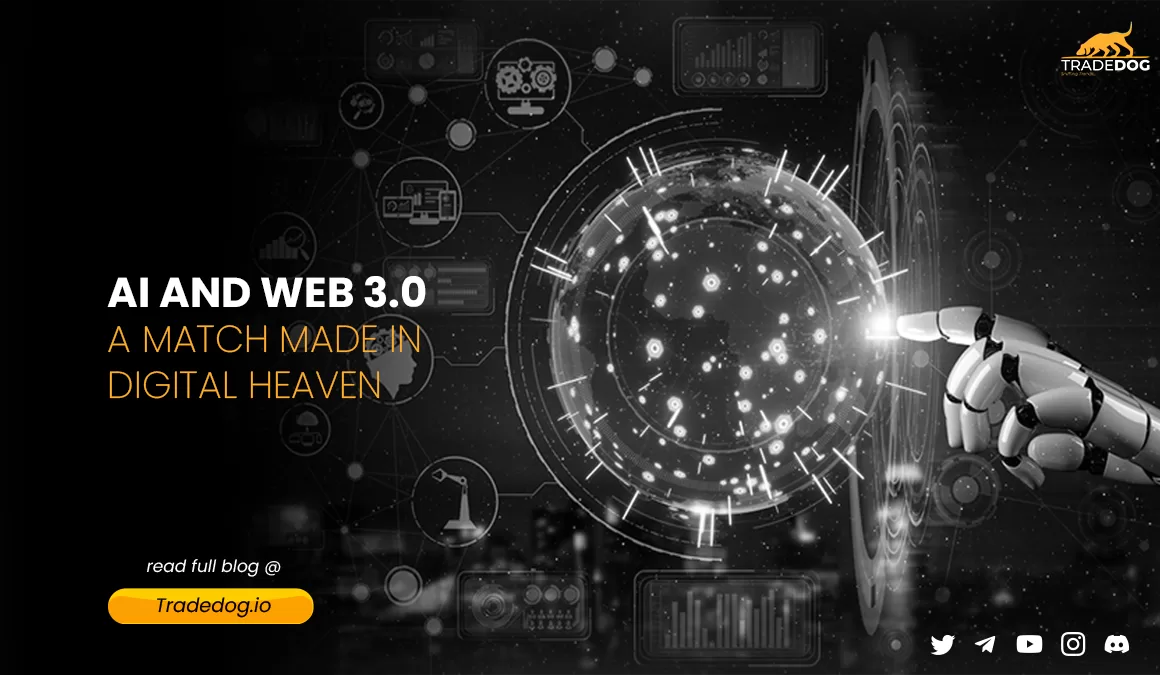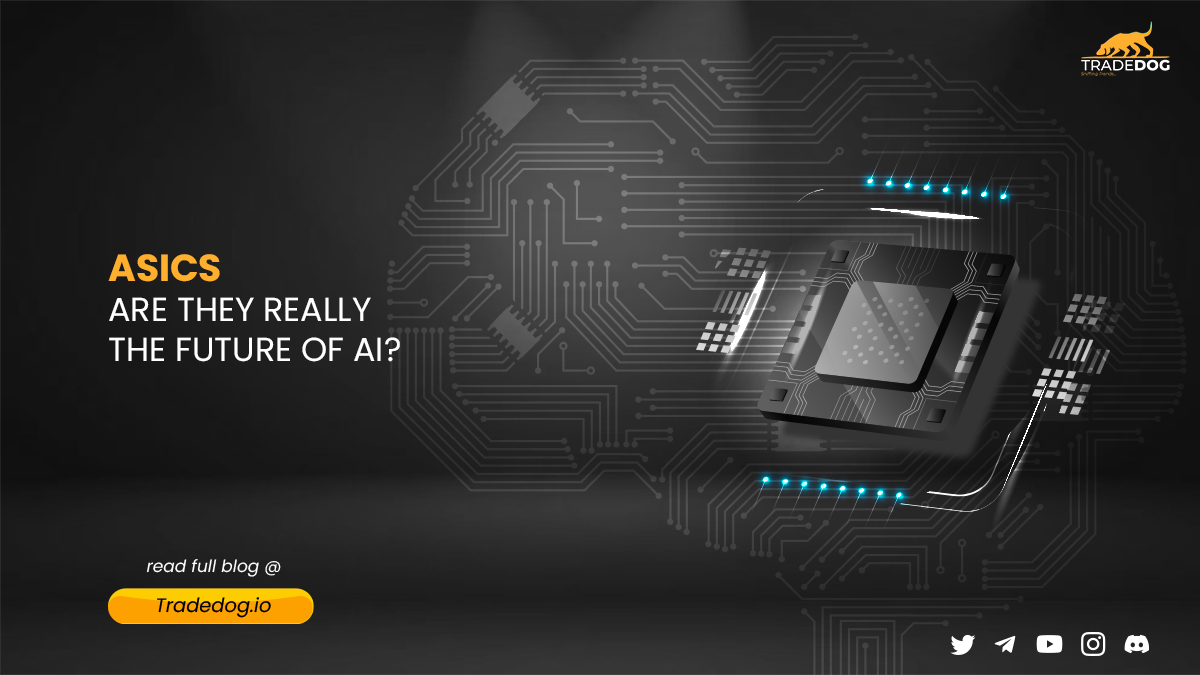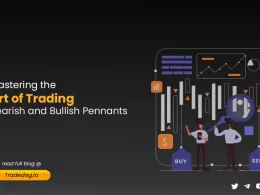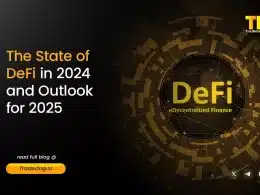Quick Links
In today’s rapidly evolving world of technology, the fusion of Artificial Intelligence (AI) and Web 3 has created quite a buzz. This dynamic pairing has ignited a wave of innovation, unlocking exciting possibilities and transforming the digital landscape across industries. The intricate workings of AI and the limitless potential of Web 3 blend seamlessly, resulting in a harmonious synergy that seems almost heavenly.
Moreover, the Fourth Industrial Revolution is just getting started, and the technologies at its core, Blockchain, and AI, have yet to come close to reaching their full potential. As each revolution before it changed how the world looked and what happened to people, these technologies are set to disrupt industries across the globe through disintermediation.
Understanding Artificial Intelligence
Artificial Intelligence strives to construct intelligent machines that can accomplish what people do. These machines analyze massive volumes of data to find patterns and make judgments. These machines are programmed to examine enormous volumes of data, identify patterns, and make conclusions based on what they have learned. They can do things we usually associate with humans, like seeing, learning, interacting with surroundings, and solving problems. Most of us have already used AI technology without even realizing it; for instance, voice assistants such as Siri and Alexa, which are widely used by people all across the globe, are based on AI. PwC estimates that by 2030, AI will contribute a staggering $15.7 trillion to the global economy, resulting in a 14% increase in global GDP.
Exploring Web 3
Web 3, also referred to as the decentralized web, marks the beginning of the next era in the realm of the Internet. It embodies a new generation of online platforms constructed on the foundation of decentralization, peer-to-peer networks, and blockchain technology. The core objective of Web 3 is to empower individuals by placing them at the center of the Internet experience. It strives to grant users complete control over their data, privacy, and online identities. Tim Berners-Lee, the person who invented the World Wide Web, envisioned Web 3 as an innovative, independent, and accessible Internet that uses AI and machine learning to act like a “global brain” and understand content both in terms of its meaning and its context.
The Use-Cases between AI and Web3
The fusion of AI and Web 3 is where the real magic happens. These two powerful technologies complement each other in ways that are simply awe-inspiring. Combining AI’s ability to process and analyze vast amounts of data with the decentralized architecture of Web 3, we unlock a whole new world of possibilities.
Enhanced Data Privacy and Security
With Web 3’s decentralized structure, individuals have ownership and control over their data, deciding how and when it should be shared. This aligns perfectly with AI’s hunger for data while safeguarding privacy and security concerns.
Trust and Transparency
Blockchain technology, a core component of Web 3, ensures that records are transparent and immutable. This is particularly valuable for AI systems, as it promotes accountability and explainability. Users can have confidence in the decisions made by AI algorithms, as they can trace back and understand the underlying processes.
Distributed Computing Power
AI algorithms often require significant computational resources to crunch massive amounts of data. With Web3’s decentralized infrastructure, computing power can be distributed across a network of nodes, making AI processing more efficient and scalable. This democratizes access to computational resources, making AI more accessible and affordable.
Personalized User Experiences
Web3 platforms can leverage AI algorithms to analyze user behavior, interests, and patterns, enabling them to deliver tailored content, recommendations, and services. The result is a highly customized and intuitive digital experience for users.
Autonomous and Intelligent Applications
With blockchain technology, Web 3’s smart contracts can independently carry out AI-driven operations, eliminating the requirement for intermediaries. This breakthrough opens doors for applications that automate intricate tasks, optimize the allocation of resources, and enhance overall operational efficiency.
Challenges in the integration of AI and Web3
Scalability
Web 3 and AI technologies rely on vast data and computational power. Ensuring scalability and efficient data processing within decentralized networks can be challenging. Overcoming scalability issues is crucial for achieving widespread adoption and seamless integration of AI in Web 3 applications.
Data Privacy and Security
Web 3 aims to empower individuals by giving them control over their data. However, ensuring robust data privacy and security in decentralized environments can be complex. Striking a balance between transparency and privacy while protecting sensitive information is essential to foster trust in AI-driven Web 3 applications.
Interoperability
As Web 3 and AI technologies evolve, ensuring interoperability among different platforms and systems becomes crucial. Seamless integration of various AI models, decentralized networks, and blockchain protocols is necessary to enable cross-platform collaboration and the exchange of data and services.
Ethical Considerations
AI algorithms powered by Web 3 can have far-reaching societal impacts. Ensuring ethical guidelines, fairness, and accountability in AI decision-making processes is vital to prevent biases, discrimination, and unintended consequences. It is necessary to develop robust frameworks and standards that govern the ethical use of AI in Web 3 applications.
Top AI x Web 3 projects to look out for:
ChainGPT
ChainGPT is an advanced AI model that utilizes blockchain technology to enhance various aspects of trading, risk management, and analytics. This AI model is quite advanced and operates on the BNB Smart Chain. It provides unique advantages and features to developers, individuals, and businesses. ChainGPT is a tool that helps users with issues in the blockchain and cryptocurrency fields by using AI algorithms. It provides users with the necessary information they need.
Fetch.AI
Fetch.ai is a blockchain platform that uses AI to automate routine tasks like flight and parking reservations. For instance, if a user wants to book a flight ticket, the platform uses an automated bot called a “digital twin,” representing the user to negotiate a deal with the airline and ticket supplier based on travel preferences and budget. This digital doppelganger can interact with others who have done comparable actions and learn via AI. In the crypto world, it is widely used to identify arbitrage opportunities and automate profit-making.
BAAI
BAAI is an AI tool that helps businesses better understand and connect with their digital audience. By capturing precise eye movements and translating them into valuable insights, it offers a comprehensive view of user engagement across various industries, from digital media and advertising to e-learning and beyond. They are leveraging the token model as fuel to run the AI engine that powers all their products and rewards the users for engaging with their products through an “Engage to Earn” economy.
Conclusion
The fusion of Artificial Intelligence (AI) and Web 3 represents an extraordinary leap forward in the world of technology. This collaboration presents numerous advantages across various domains. The exciting prospects offered by the combination of AI and Web 3 have led to the emergence of many remarkable projects, which have been discussed above.
As we look ahead, it is clear that the integration of AI and Web 3 holds immense promise. This digital alliance is poised to reshape our world, from revolutionizing industries to empowering individuals. However, addressing issues like ethical considerations, data privacy concerns, and interoperability challenges is vital to fully realize the potential of this match made in digital heaven.













